What Voltage Should a Tattoo Liner Run At?
An essential element affecting the overall quality of a tattoo is the voltage for the tattoo machine. The voltage controls how much power is sent to the needle, influencing how quickly the needle travels, how deeply it penetrates the skin, and how much ink is deposited into the skin. So, what voltage should a tattoo liner run at?
Typically, voltages of 7 volts to 9 volts are used by most artists for lining 8 should be a decent starting point, and 8 volts to 10 volts for shading.
Every conceivable facet of the question of at what voltage should a tattoo liner run has been considered. So stick around to learn more.
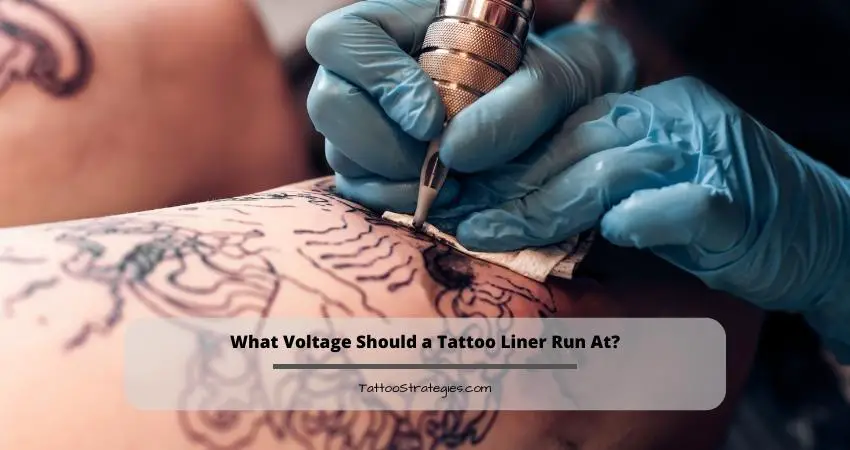
How to Adjust Voltage on a Tattoo Machine- 4 Easy Steps!
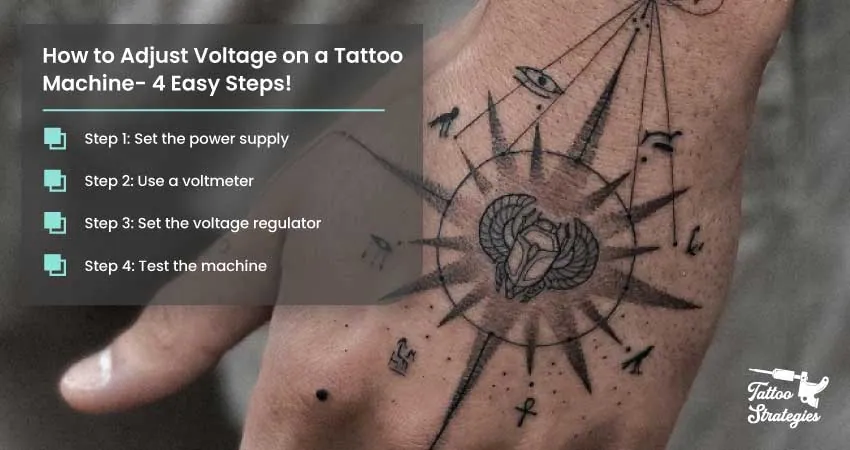
Most tattoo machines contain a dial or a knob you may use to adjust the voltage. Usually, the voltage is adjusted between 4 and 10 volts. If you’re unsure what voltage to put your machine at, start low and increase the setting gradually until you discover one that suits you.
Detailed instructions on how to set your tattoo machine are provided below.
Step 1: Set the power supply
As direct current is used to power tattoo machines, voltage is guaranteed to remain constant. The amount of ink deposited depends on the voltage you employ and the depth to which the needles pierce the skin.
A power source with a 2–20 volt range is typically used by tattoo artists. If you’re a newbie, it’s advised that you start at the lower end of the range and gradually increase the voltage as you get more accustomed to the machine.
Step 2: Use a voltmeter
Ensure the power source is off before adjusting the voltage on your system. The voltage of the power source should then be measured using a voltmeter.
Step 3: Set the voltage regulator
The voltage regulator on the machine should be set to the required voltage once you have established the voltage of the power supply.
Step 4: Test the machine
To ensure that the device is operating correctly, test it last on a piece of paper or your skin.
What’s The Ideal Voltage Range For A Tattoo Machine?

The most popular voltage for tattoo machines is between 6 and 10 volts.
However, they may run on other voltages as well. The best voltage for a tattoo machine relies on various elements, such as the machine’s kind, the needle’s size, the ink density, and the client’s particular skin type.
Since this gives them greater control and causes less tissue harm, some tattoo artists like using lower voltages of 6-8 volts for the lining, shading, and filling; higher voltages of 9–10 volts are often utilized since they cause the needle to penetrate the skin more deeply.
The appropriate voltage for a tattoo machine ultimately relies on the design of the tattoo and the preferences of the tattoo artist. Finding the ideal location for each tattoo typically requires trial.
Voltage Of A Tattoo Machine; Why Does It Matter?
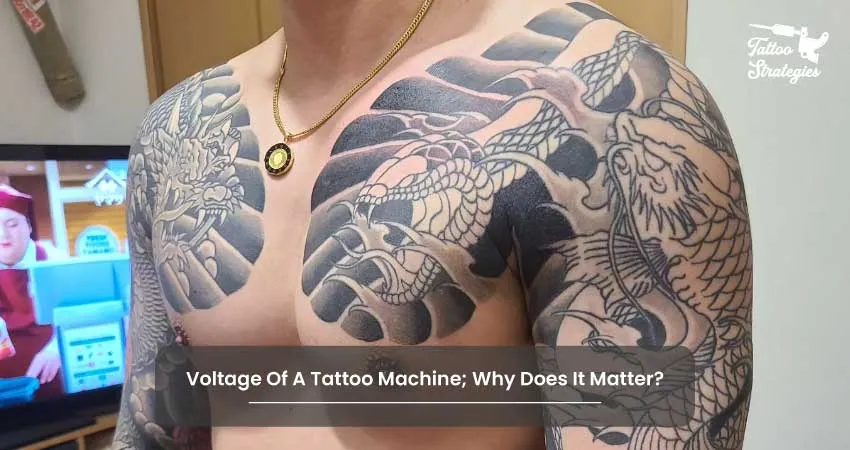
One of a tattoo machine’s most crucial components is voltage. A machine’s voltage dictates how much power it has and how quickly it can function.
A device with a greater voltage can tattoo more quickly and precisely than a lower voltage. The voltage that best suits your demands should be taken into account while selecting a machine. The fact is that the higher the voltage, the deeper your tattoo will be.
This is a reference to the fact that the machine’s voltage has an effect on how deeply the tattoo needle will pierce the skin. Depending on what you’re searching for, this may or may not be a good thing. Using a machine with a greater voltage will result in a more profound, permanent tattoo. Use a machine with a lesser voltage; however, if you want a tattoo that is more transient and will eventually fade.
Therefore, if you prefer a lighter tattoo, go for a lower voltage. The penetration of the needle will be reduced with decreasing voltage. Because the needle won’t penetrate the skin as deeply, this is helpful for lighter tattooing. Since it lowers the possibility of irritation and skin damage, this is particularly crucial for those with sensitive skin.
Tattoo Power Supply Settings

Understanding what everything is used for and how all the equipment works might be intimidating if you’re just getting started as a tattoo artist. An explanation of each setting on your power supply may be found below.
- Power Switch performs precisely what it says and turns on and off your power source.
- You may change the voltage released from your tattoo machine using the voltage dial. This might be a dial that you turn, or there can be buttons to push on a digital power supply.
- The duty cycle, or how long the needle is in the skin, is the proportion of time that the machine is operating. At this point, the circuit is opened since the contact screw is in contact with the front spring. The majority of tattoo artists strive for a duty cycle of 50%.
- Voltage Display shows the voltage output from your device so you can keep track of how much voltage you’re consuming. It may be shown digitally or on an analog display.
- Multiple tattoo machines can be connected using a dual switch on some power sources. You may transfer electricity between the devices using the switch.
Voltage For Tattoo Machine Lining
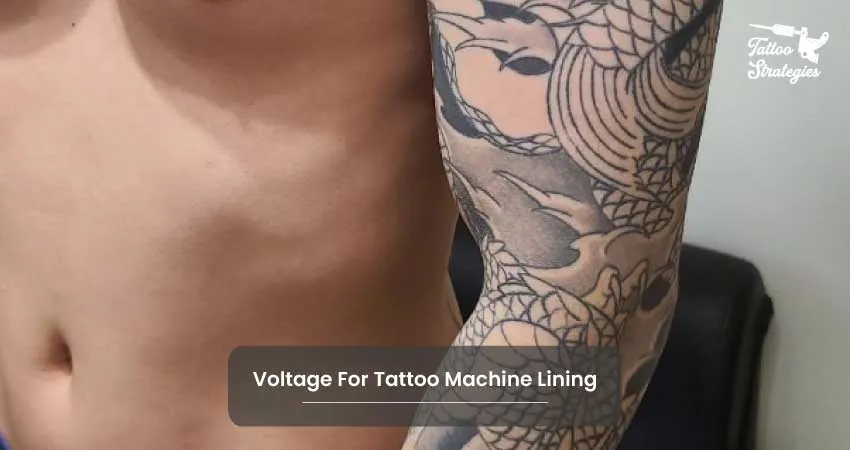
The voltage you choose for lining will depend on a few different things. Most tattoo machines offer a range of voltages that they can function at.
The size of the needle you’re using is the first factor to consider because a bigger needle requires more voltage to penetrate the skin.
The second factor is the rate of work you want to do; the faster you intend to go, the greater the voltage you’ll require. Last but not least, it relies on your particular preferences. Some individuals discover that a greater voltage produces better results, while others like a lower voltage.
In the end, you’ll have to experiment to find the voltage that works best for you because there is no ideal voltage for the lining.
Find the sweet spot by starting at a lower voltage and working your way up.
Tattoo Machine Speed For Shading
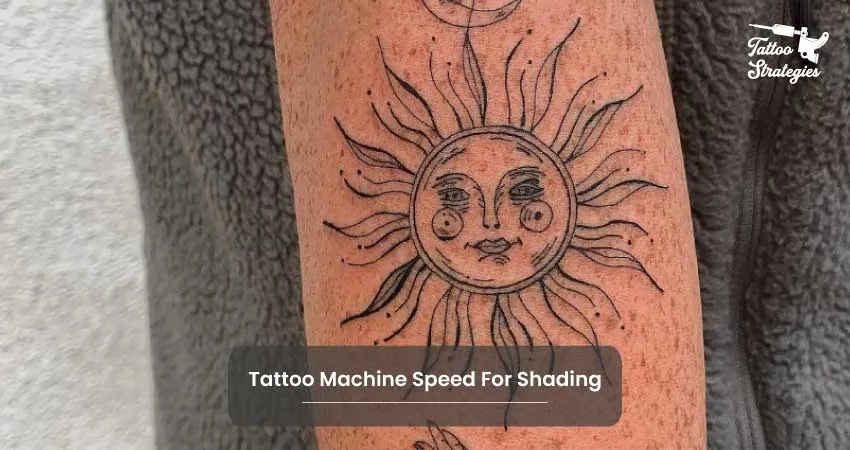
One of the most crucial elements of tattooing is shading. Thus, selecting the appropriate machine speed for the work is crucial. When choosing the proper machine speed for shading, there are a few things to consider, such as the sort of shading you’re performing, the size of the area you’re shading, and the ink type you’re using.
There are a few considerations you need to make while choosing the tattoo machine speed for shading.
Firstly, The sort of computer you are utilizing is the first thing you need to consider. For shading, rotary and coil machines are also available. When utilizing a rotary machine, you should operate it at a slower pace than when using a coil machine.
This is because using a rotary machine will result in less stress on the skin and a quicker recovery time.
Secondly, the type of needle you are using is the second factor that you need to consider. Needles come in various sizes and forms that may be utilized for shading.
The circular shader needle is the most typical needle used for this function. This needle excels at producing a uniform and slick shading effect.
Finally, the power supply you are utilizing is the last thing you need to consider. When using a device that needs an AC power source, you should operate it faster than a device that needs a DC power source. This is because the AC power will make the machine operate more quickly and provide better shading.
Configuring Your Power Supply
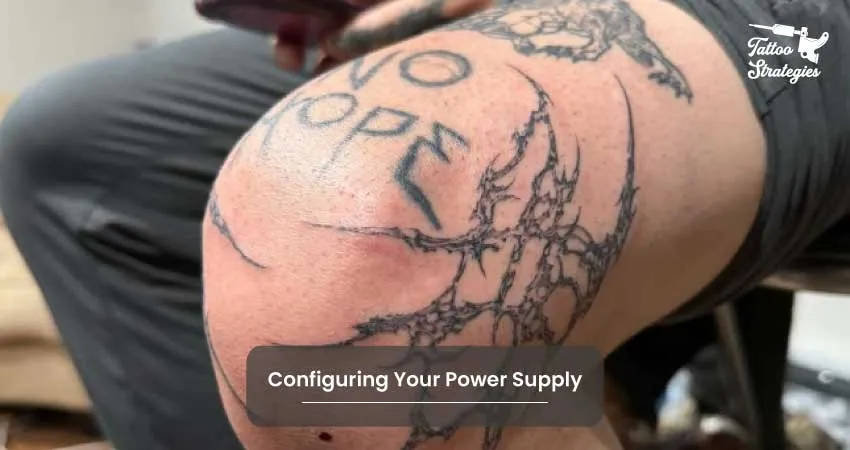
Make sure your power supply is configured appropriately when you initially set it up. If you don’t configure it correctly, this may be harmful. Reading the manufacturer’s directions should be your first step. They may come out as a little boring, but they are knowledgeable.
Ensure your power supply’s appropriate slots are occupied by your foot pedal and tattoo machine clip cable. After that, you may turn on the power source.
Push down on the foot pedal while holding your tattoo machine in your hand. The buzz from your tattoo machine should then be consistent. Increase the voltage a little bit if you still don’t hear the buzz.
Check that the needle is coming out of the tattoo machine’s end and that the armature bar is moving fast up and down before applying the tattoo machine to anyone’s flesh.
After that, you may begin tattooing.
10 Variables That Can Influence Tattoo Voltage
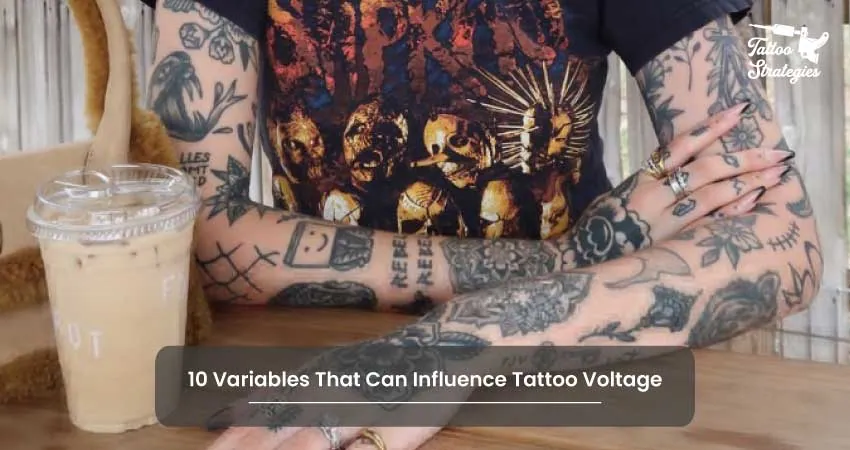
- The kind of substance that voltage passes through has an impact on it.
- Voltage is influenced by the material’s resistance through which it passes.
- Voltage is influenced by the material’s length through which it passes.
- Voltage is influenced by the material’s cross-sectional area through which it passes.
- Voltage is impacted by the material’s temperature through which it passes.
- The frequency of the current has an effect on voltage as well
- Voltage can be impacted by the presence of other magnetic fields.
- The electrodes’ location has an impact on voltage.
- Voltage can also be impacted by the design of the electrodes.
- Voltage is influenced by the surface area of the electrodes in contact with the substance carrying the current.
FAQs
Use which power supply, if any?
Whichever you select, it will function much the same as the other products on the market. Although each make and model will have unique physical characteristics, they all serve the same essential function.
Is a Digital Voltage Display Necessary?
Conclusion
Have you grasped what voltage should a tattoo liner run at?
We anticipate a favorable reaction because we think we have covered everything about the topic. You’ll be happy you were patient while reading when it’s all through. Wish you good luck!
